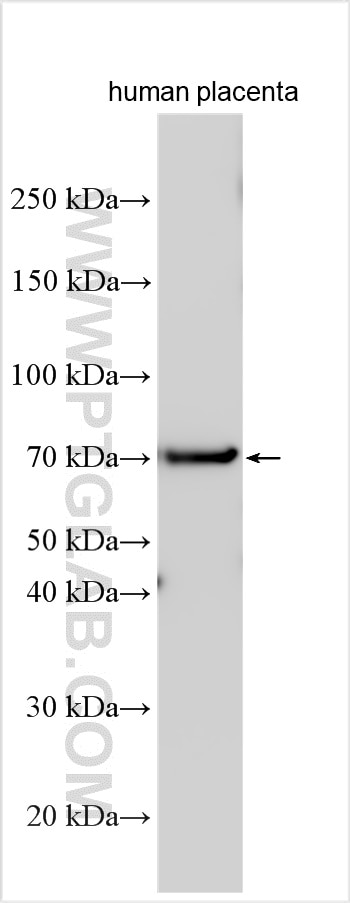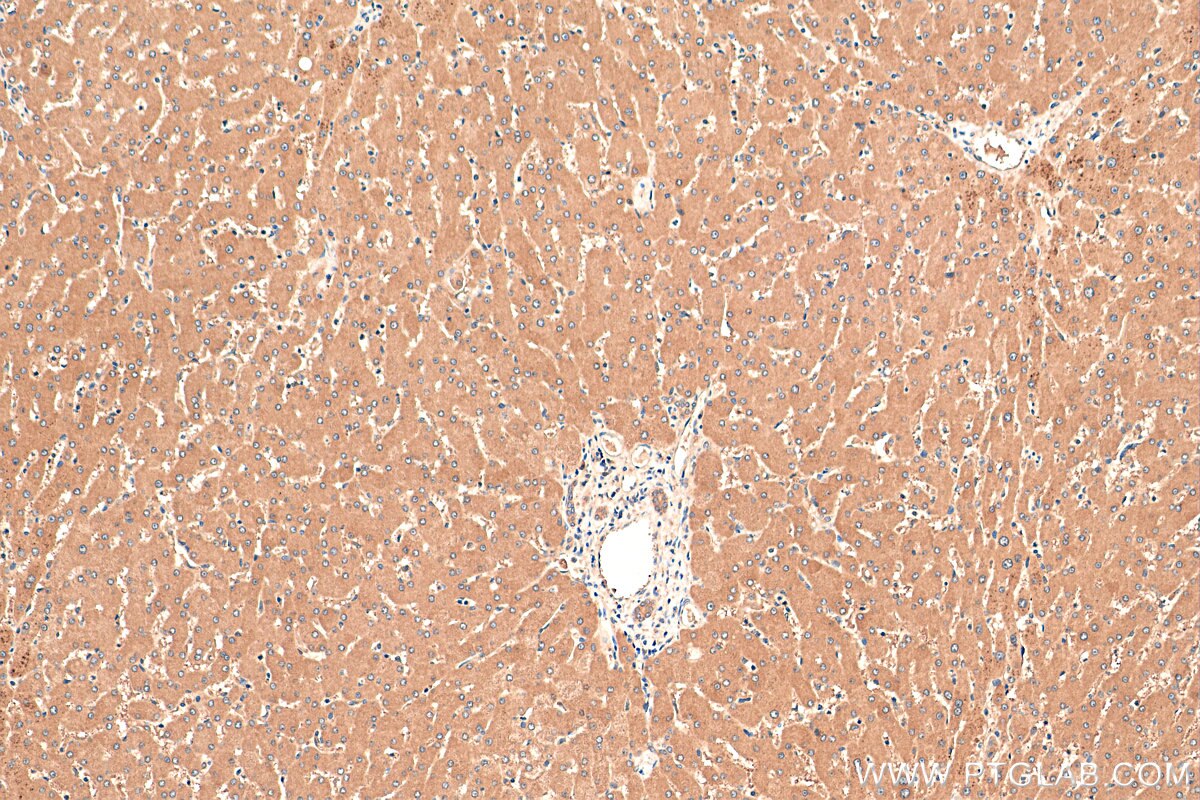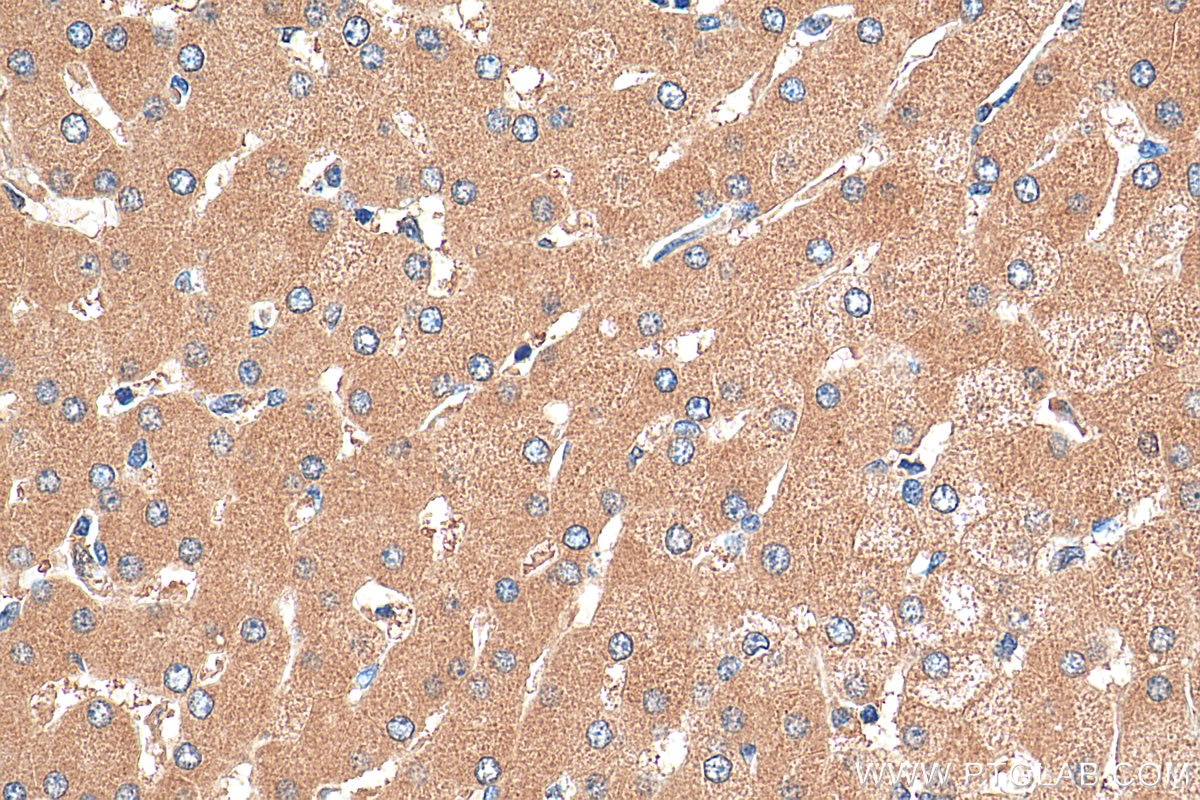PTPRD Polyklonaler Antikörper
PTPRD Polyklonal Antikörper für WB, IHC, ELISA
Wirt / Isotyp
Kaninchen / IgG
Getestete Reaktivität
human, Maus, Ratte
Anwendung
WB, IHC, ELISA
Konjugation
Unkonjugiert
Kat-Nr. : 27941-1-AP
Synonyme
Geprüfte Anwendungen
| Erfolgreiche Detektion in WB | HuH-7-Zellen, humanes Plazenta-Gewebe, Mauslebergewebe, Rattenlebergewebe |
| Erfolgreiche Detektion in IHC | humanes Lebergewebe Hinweis: Antigendemaskierung mit TE-Puffer pH 9,0 empfohlen. (*) Wahlweise kann die Antigendemaskierung auch mit Citratpuffer pH 6,0 erfolgen. |
Empfohlene Verdünnung
| Anwendung | Verdünnung |
|---|---|
| Western Blot (WB) | WB : 1:1000-1:5000 |
| Immunhistochemie (IHC) | IHC : 1:50-1:500 |
| It is recommended that this reagent should be titrated in each testing system to obtain optimal results. | |
| Sample-dependent, check data in validation data gallery | |
Produktinformation
27941-1-AP bindet in WB, IHC, ELISA PTPRD und zeigt Reaktivität mit human, Maus, Ratten
| Getestete Reaktivität | human, Maus, Ratte |
| Wirt / Isotyp | Kaninchen / IgG |
| Klonalität | Polyklonal |
| Typ | Antikörper |
| Immunogen | PTPRD fusion protein Ag27689 |
| Vollständiger Name | protein tyrosine phosphatase, receptor type, D |
| Berechnetes Molekulargewicht | 1912 aa, 215 kDa |
| Beobachtetes Molekulargewicht | 75 kDa, 175 kDa |
| GenBank-Zugangsnummer | BC106714 |
| Gene symbol | PTPRD |
| Gene ID (NCBI) | 5789 |
| Konjugation | Unkonjugiert |
| Form | Liquid |
| Reinigungsmethode | Antigen-Affinitätsreinigung |
| Lagerungspuffer | PBS with 0.02% sodium azide and 50% glycerol |
| Lagerungsbedingungen | Bei -20°C lagern. Nach dem Versand ein Jahr lang stabil Aliquotieren ist bei -20oC Lagerung nicht notwendig. 20ul Größen enthalten 0,1% BSA. |
Hintergrundinformationen
PTPRD is a receptor-type protein tyrosine phosphatase that plays significant roles in various biological processes, including cell adhesion, synaptic function, and signal transduction. PTPRD is highly expressed in the brain, followed by the kidney, ovary, placenta, and intestine. Within the brain, it is found in specific regions, suggesting a role in neurological functions. PTPRD has emerged as a potential therapeutic target for various brain phenotypes and disorders. Its genetic variations have been associated with nervous system phenotypes, and the discovery of the first small molecule inhibitor of PTPRD phosphatase has opened new avenues for therapeutic intervention in addiction and possibly other PTPRD-associated disorders. Additionally, PTPRD is considered a tumor-suppressor gene that is down-regulated in hepatocellular carcinoma, suggesting its role in cancer progression and potential as a therapeutic target. The protein can recognize 175 kDa full length and 75 kDa mature cleavage product (PMID: 19074898, PMID: 25113440).
Protokolle
| PRODUKTSPEZIFISCHE PROTOKOLLE | |
|---|---|
| WB protocol for PTPRD antibody 27941-1-AP | Protokoll herunterladen |
| IHC protocol for PTPRD antibody 27941-1-AP | Protokoll herunterladenl |
| STANDARD-PROTOKOLLE | |
|---|---|
| Klicken Sie hier, um unsere Standardprotokolle anzuzeigen |





